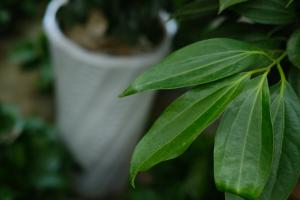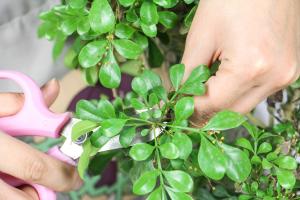How to Take Care of Your Rubber Tree Plant
Whether you're a seasoned plant parent or a beginner, taking care of a rubber tree plant (Ficus elastica) can be a rewarding experience. These plants, also known as rubber figs, are popular indoor trees that originate from India and Malaysia. They are known for their large, glossy leaves and easy-going nature. To keep your rubber tree healthy and thriving, here are some tips on how to properly care for it.
Light Requirements
One of the most important factors in caring for a rubber tree plant is to provide it with enough light. These plants enjoy bright, indirect light and thrive in a spot near a window with filtered sunlight. Avoid placing your rubber tree in direct sunlight, as this can cause the leaves to sunburn and turn brown.
If your rubber tree isn't getting enough light, it may become leggy or develop sparse foliage. To remedy this, move it to a brighter spot or consider using a grow light to supplement its light needs.
Watering and Humidity
Rubber tree plants prefer soil that is moist but not waterlogged. Water your plant when the top inch of soil feels dry to the touch. Use room-temperature water and ensure that the pot has proper drainage to avoid water buildup. Overwatering can cause root rot, which can be fatal to your plant.
In addition to proper watering, it's important to maintain adequate humidity levels. Rubber tree plants prefer a humid environment and will benefit from occasional misting or placing a humidifier nearby. Dry air can cause the leaves to yellow and fall off, so keeping humidity levels between 40% to 60% is ideal.
Fertilizing and Pruning
To keep your rubber tree plant healthy and happy, it's recommended to fertilize it every two weeks during the growing season (spring to early fall). Use a balanced liquid fertilizer diluted to half strength and apply it to the soil. Avoid fertilizing during the winter months when the plant is in a dormant state.
Pruning is also an important aspect of rubber tree plant care. Regular pruning will encourage a bushier and fuller growth habit. Use sharp, clean pruning shears to remove any dead, yellowing, or damaged leaves. You can also prune your plant to control its size and shape. Keep in mind that rubber tree sap can irritate the skin, so wear gloves and wash your hands after pruning.
Pest Control
Occasionally, rubber tree plants can fall victim to pests like spider mites, mealybugs, and scale insects. These pests can be easily treated with insecticidal soap, which can be purchased at your local garden center. Be sure to thoroughly cover the leaves and stems with the soap and repeat the application every seven to 10 days until the pests are gone.
Final Thoughts
Caring for a rubber tree plant requires a bit of effort, but the results are worth it. By providing your plant with proper light, water, and humidity, as well as regular fertilizing and pruning, you can enjoy a healthy and thriving rubber tree for years to come. Happy planting!

 how many times do yo...
how many times do yo... how many planted tre...
how many planted tre... how many pine trees ...
how many pine trees ... how many pecan trees...
how many pecan trees... how many plants comp...
how many plants comp... how many plants can ...
how many plants can ... how many plants and ...
how many plants and ... how many pepper plan...
how many pepper plan...





























